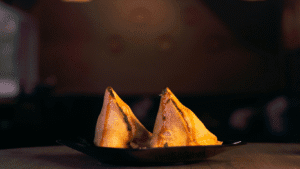Frosting is a vital component of many desserts, from cupcakes to layered cakes and cookies. Whether you’re a home baker or an experienced professional, creating the perfect frosting can elevate your baked goods. While many bakers typically use a hand mixer or stand mixer to whip up frosting, you might be surprised to learn that a food processor can be a powerful tool for making frosting. Using a food processor not only simplifies the process but also results in a smooth, creamy texture that’s perfect for decorating.
In this comprehensive guide, we’ll dive into everything you need to know about making frosting in a food processor, including techniques, variations, tips for success, and some of the top frosting recipes you can try. Whether you’re new to baking or just looking to try a new method, this guide has you covered.
Why Use a Food Processor for Frosting?
Most people associate food processors with tasks like chopping vegetables or making pie dough. However, these versatile kitchen appliances can handle a variety of other tasks, including whipping up silky smooth frosting. Here’s why you should consider using a food processor to make your frosting:
- Smooth Texture: The sharp blades of the food processor can break down ingredients quickly, resulting in a super smooth and lump-free texture.
- Efficiency: A food processor can combine ingredients quickly, saving you time compared to using a hand mixer.
- Convenience: Food processors allow you to mix all the ingredients at once without the need for multiple bowls or attachments.
- Even Mixing: The powerful motor and design ensure that ingredients are evenly mixed without overbeating or curdling.
Basic Frosting Ingredients
Before we dive into specific recipes, let’s go over the basic ingredients you’ll need to make frosting in a food processor. While the ingredients may vary depending on the type of frosting you’re making, most recipes will include the following:
- Butter: Provides richness and creaminess. Unsalted butter is typically used so you can control the salt level.
- Powdered Sugar: The key sweetener in most frostings. Powdered (or confectioners’) sugar is finely ground and dissolves easily, creating a smooth texture.
- Vanilla Extract: Adds flavor and enhances the sweetness. You can use other extracts like almond, lemon, or mint for variety.
- Milk or Cream: Used to adjust the consistency of the frosting, making it either thicker or thinner.
- Salt: A pinch of salt enhances the overall flavor and balances the sweetness.
Now that we’ve covered the basics, let’s move on to some common frosting techniques and recipes that can be made using a food processor.
How to Make Classic Buttercream Frosting in the Food Processor
Buttercream frosting is a favorite for many cakes and cupcakes due to its smooth, creamy texture and sweet flavor. Making buttercream in the food processor is surprisingly easy, and the results are flawless.
Ingredients:
- 1 cup unsalted butter (room temperature)
- 4 cups powdered sugar
- 2-3 tablespoons heavy cream or milk
- 1 ½ teaspoons vanilla extract
- Pinch of salt
Instructions:
- Prepare the Butter: Start by cutting the room-temperature butter into cubes and placing them in the food processor.
- Pulse the Butter: Pulse the butter in the food processor for about 30 seconds to a minute, until it becomes smooth and creamy.
- Add the Sugar: Gradually add the powdered sugar, one cup at a time, pulsing between additions. You may need to scrape down the sides of the bowl to ensure everything is evenly mixed.
- Add Vanilla and Salt: Add the vanilla extract and a pinch of salt to the mixture. Pulse again to incorporate.
- Adjust Consistency: With the food processor running, slowly pour in 2 tablespoons of heavy cream or milk. If the frosting is too thick, add more cream until you reach your desired consistency.
- Final Mixing: Continue processing for another minute to make the frosting extra fluffy and smooth.
Tips for Success:
- Room-Temperature Ingredients: Always ensure your butter is at room temperature. Cold butter will result in a grainy texture, while melted butter can make the frosting too thin.
- Don’t Overprocess: While the food processor can handle mixing well, avoid overprocessing as it could result in a frosting that’s too soft or greasy.
How to Make Cream Cheese Frosting in the Food Processor
Cream cheese frosting is tangy, creamy, and pairs well with cakes like carrot cake, red velvet, and even cinnamon rolls. Here’s how you can make it using your food processor.
Ingredients:
- 1 cup cream cheese (room temperature)
- ½ cup unsalted butter (room temperature)
- 4 cups powdered sugar
- 2 teaspoons vanilla extract
- 1-2 tablespoons milk (optional, for thinning)
Instructions:
- Process Cream Cheese and Butter: Cut the cream cheese and butter into small chunks, then place them in the food processor. Process for 1-2 minutes until the mixture is smooth and creamy.
- Add Sugar: Gradually add the powdered sugar, one cup at a time, processing after each addition. Continue until all the sugar is incorporated.
- Add Vanilla: Add the vanilla extract and process again to combine.
- Adjust Consistency: If the frosting is too thick, add a tablespoon or two of milk to reach your desired consistency. Pulse briefly to mix.
Tips for Success:
- Keep Ingredients Cold: For cream cheese frosting, it’s okay if the cream cheese is slightly colder than room temperature to prevent the frosting from becoming too runny.
- Flavor Variations: Add lemon zest or cinnamon to give your cream cheese frosting a unique twist.
How to Make Chocolate Frosting in the Food Processor
Chocolate frosting is a decadent topping for any dessert. You can make rich, creamy chocolate frosting in the food processor using simple ingredients.
Ingredients:
- 1 cup unsalted butter (room temperature)
- ½ cup unsweetened cocoa powder
- 3-4 cups powdered sugar
- 3-4 tablespoons heavy cream
- 2 teaspoons vanilla extract
- Pinch of salt
Instructions:
- Process the Butter and Cocoa: Start by processing the butter and cocoa powder in the food processor until smooth and creamy.
- Add Sugar and Cream: Add powdered sugar, one cup at a time, alternating with heavy cream to keep the mixture smooth. Continue processing until the frosting reaches a creamy consistency.
- Add Vanilla and Salt: Add the vanilla extract and a pinch of salt, then pulse a few times to incorporate.
- Adjust Consistency: If the frosting is too thick, add more cream, one tablespoon at a time, until you reach your desired texture.
Tips for Success:
- Use High-Quality Cocoa Powder: For the best flavor, use high-quality cocoa powder.
- Make It Richer: Add melted dark chocolate for a richer, more intense chocolate flavor.
How to Make Whipped Cream Frosting in the Food Processor
If you’re looking for a lighter frosting, whipped cream frosting is a great option. Here’s how you can make it in the food processor.
Ingredients:
- 1 cup heavy whipping cream (cold)
- 2 tablespoons powdered sugar
- 1 teaspoon vanilla extract
Instructions:
- Chill the Ingredients: For best results, make sure your heavy cream is cold. You can also chill the bowl of the food processor to help the cream whip more efficiently.
- Process the Cream: Pour the heavy cream into the food processor and process on high speed for about 1 minute, until the cream begins to thicken.
- Add Sugar and Vanilla: Add the powdered sugar and vanilla extract, then continue processing until the cream reaches stiff peaks.
- Use Immediately: Whipped cream frosting should be used right away to prevent it from deflating.
Tips for Success:
- Don’t Overprocess: Be careful not to overwhip the cream, as it can quickly turn into butter.
- Stabilize: To make whipped cream frosting more stable for decorating, add a tablespoon of cornstarch or a stabilizer like gelatin.
Common Mistakes to Avoid When Making Frosting in the Food Processor
- Overmixing: While the food processor is a powerful tool, it’s easy to overmix your frosting, leading to a greasy or runny texture. Always pulse in short bursts and stop when you reach the desired consistency.
- Using Cold Butter: Cold butter won’t mix smoothly, leaving you with a lumpy frosting. Always let the butter come to room temperature before starting.
- Adding Liquid Too Quickly: Adding too much milk or cream too quickly can make your frosting too thin. Add liquid a little at a time to avoid this.
- Not Scraping the Sides: Food processors tend to push ingredients up the sides of the bowl. Make sure to scrape down the sides occasionally to ensure even mixing.
Final Thoughts:
Making frosting in a food processor can be a game-changer for any baker. From classic buttercream to tangy cream cheese frosting, this method ensures a smooth, even consistency with less effort. The next time you’re whipping up a batch of cupcakes or frosting a birthday cake, consider reaching for your food processor—it might just become your new favorite kitchen tool.
FAQs:
Can I use frozen butter in a food processor?
It’s best to avoid frozen butter when making frosting. Use room-temperature butter for a smooth, creamy texture.
What’s the best way to store frosting made in a food processor?
Store your frosting in an airtight container in the refrigerator. When you’re ready to use it, let it sit at room temperature for 15-20 minutes to soften.
Can I add food coloring to frosting made in a food processor?
Yes! After the frosting is fully mixed, you can add gel or liquid food coloring and pulse to incorporate.




